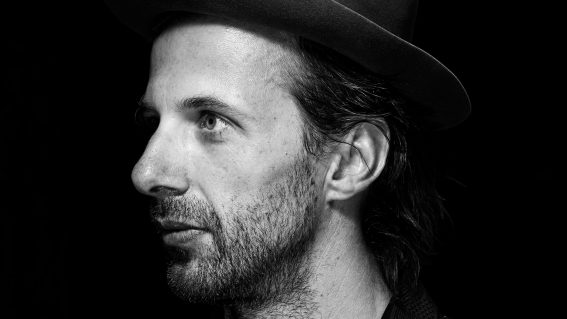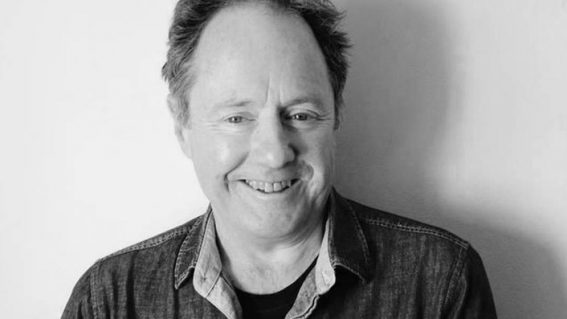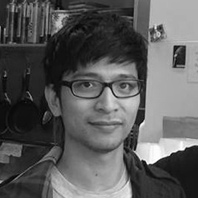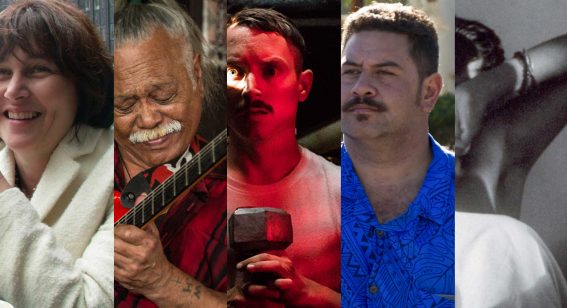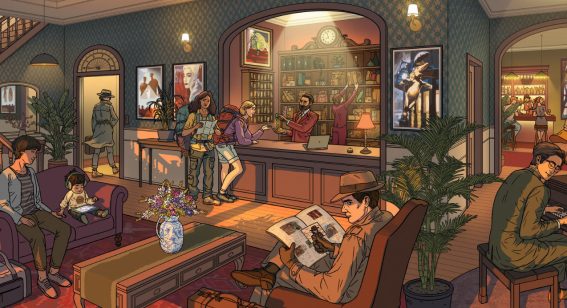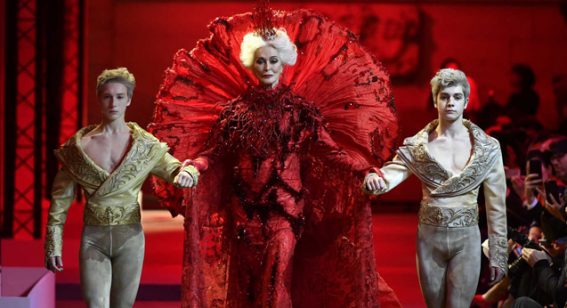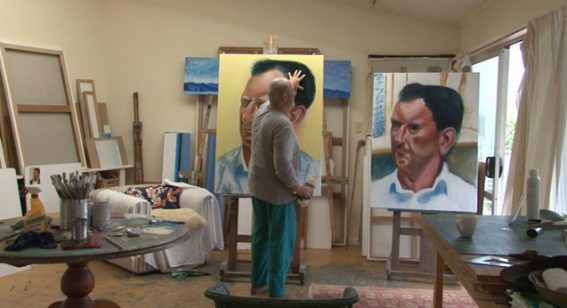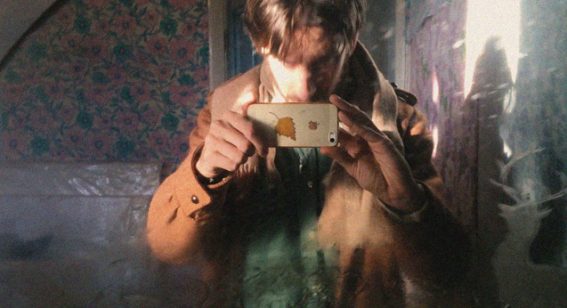NZIFF director Bill Gosden on programming Kiwi films throughout the years

The NZ International Film Festival has just announced its Auckland programme, with the rest of the country to come. As we’ve come to expect, this year features a strong contingent of local films, as covered yesterday.
Festival director Bill Gosden has been an unflagging champion of Aotearoa film, having spent decades at the cinema coalface. We thought it fitting to pose some questions about how he sees the local film landscape from a NZIFF vantage point.
What was the Aotearoa film landscape like when you first began working on film festivals?
My first Festival job followed soon after the establishment of the New Zealand Film Commission. This was no accident, as Lindsay Shelton who founded the Festival in Wellington in 1972 was moving on to be the Commission’s Marketing Director. David Gascoigne was the chair of the Federation of Film Societies, my employer. It was an exciting time. It felt like the start of something and it was. The Wellington Film Festival was close to the action. Vincent Ward watched his In Spring One Plants Alone rushes at the Festival office and made us his poste restante [meaning they received – and held – his mail].
What role does the NZ International Film Festival now play in supporting homegrown film?
Anyone who places a film with us hopes ours will be the first of many screenings. The undistributed films will be looking to initiate exhibitor interest, and the distributed films will be looking to cement it. We hope our heat-seeking devices have identified the audience who is going to most appreciate a film and welcome it into the world.
We also provide a platform for celebration, and I think that is especially true this year with films that come in praise of such formidable individuals as Paul Callaghan and Celia Lashlie, not to mention the women wielding blades of steel in She Shears. Could Tim van Dammen hope for a more prime time premiere than opening Incredibly Strange?
We also pay a 25% share of the box office and provide travel assistance to touring filmmakers.

Tim van Dammen’s Mega Time Squad
Has this changed over the years?
For sure. Once there were films that only played in cinemas and films that only played in cinemas during festivals. Led by Lindsay, the Wellington Film Festival was much more hospitable to New Zealand work than Auckland. We’ve posted a great story from Geoff Steven, director of Test Pictures, the first New Zealand feature to play Auckland.
Newspaper archives have thrown up a horror story from George Rose whose Sadness of the Post Intellectual Art Critic (1979) was premiered to a full Paramount in Wellington, then hastily programmed in Auckland as the support for a Truffaut movie, only to be pulled off the programme and roundly insulted by festival staff when the Truffaut fans slow-clapped it.
Have local films always earned their place alongside international programming in the festival? Has it ever been difficult to justify the presence of films from Aotearoa in the festival on artistic merit alone as opposed to country of origin?
Our coverage of New Zealand work has increased steadily. The pertinence of a film locally can always prevail over filmmaking sophistication.
Has your role at NZIFF shaped a view as to how the local filmmaking community has developed compared to the overseas festival film landscape over time?
Many films we show are directed specifically to a New Zealand audience. Maui’s Hook is dedicated to a very particular context. Shirley Horrocks says she made her film Dancing with Atoms in the hope that every New Zealander would come to know about Paul Callaghan. Amanda Millar’s film about Celia Lashlie goes in assuming we know whom she is talking about. The means to make films at this level of ambition have become more accessible and affordable everywhere; the best results grace appropriate festival programmes everywhere. For all its international stature, Toronto still keeps faith with films that may never cross the borders of Ontario.
What artistic trends and commercial challenges have you seen Aotearoa films share with their overseas festival counterparts over time?
We are the new masters of quirk, thanks to a trio of guys who used to hang out at the Deluxe Café, but don’t take your eyes off Iceland. Spot the fob-off? This question is too big and too hard.
How important are short films to the development of practitioners in the industry, and how do audiences respond to the format?
If it’s Two Cars, One Night, they are in heaven. The short film should be and often is a thing of beauty in itself. The calling card film, not so much, though there are some gripping examples, including Roseanne Liang’s Do No Harm in 2017. What can be inferred from a short as regards prospective feature making is never going to be definitive, unless of course the short is very bad.
The audience that comes expressly to see short films is an enthusiastic one. Audiences can be hard on shorts programmed ahead of features, so we try hard to match them up. This year the shorts submitted for the popular New Zealand’s Best and Ngā Whanaunga programmes were so strong we added two more short film programmes [Eight Uneasy Pieces and Foreign Correspondents] rather than pepper individual shorts through the programme.
Which local film have you been most proud of screening at the festival, and why? And are there some you regret not including?
It’s a long list of proud moments, but nothing compares to the day when we premiered Kaikohe Demolition and In My Father’s Den on the same afternoon, unless it’s the night we world-premiered Mr Wrong or Topless Women Talk About Their Lives, or Utu Redux or Dark Horse or Poi E or the evening the Tūhoe nation filled the stalls of the Civic in their finest for Vincent Ward’s Rain of the Children; or the night Dunedin filled the Regent for Scarfies; not to mention the heart-stopping Embassy world premiere of Heavenly Creatures.
And that’s just the Big Nights. Wonderful moments in smaller rooms: Hone Tuwhare’s appearances at the screenings of Michelle McGregor’s 2004 portrait; the love for Roseanne Liang’s Banana in a Nutshell; running Snakeskin’s hometown premiere simultaneously in three tiny rooms at the Christchurch Rialto, with speeches in each.
Regrets, nah.

Gillian Ashurst’s Snakeskin
Is it difficult from a personal point of view to programme films by local filmmakers against big draws like Cannes winners and so on that may have much more interest from audiences?
You want to show on Saturday, that’s the risk you take. But there is more audience for any film at those peak times, obviously.
What surprises – good and bad – have you encountered in how festival audiences have responded to films from Aotearoa?
Good: great media interest in the local films at all levels, often at the expense of international headliners.
Disappointing: Parochialism in another guise. The short-lived but smart and funny Aro Valley ‘wave’ crested a few kilometres east, at the Paramount. The Wellington audience for Aucklanders Adam Luxton and Jeremy Dumble’s scabrous portrait of their city, We Feel Fine, consisted of the Aro Valley filmmakers and barely another soul. Audiences anywhere for Sam Hamilton’s gorgeous, spacey Apple Pie were tiny. I’d love to see NZIFF stimulating the curiosity these dissenters and experimenters deserve.
This story is part of our month-long celebration of 40 years of NZ film. Follow all our daily coverage here

